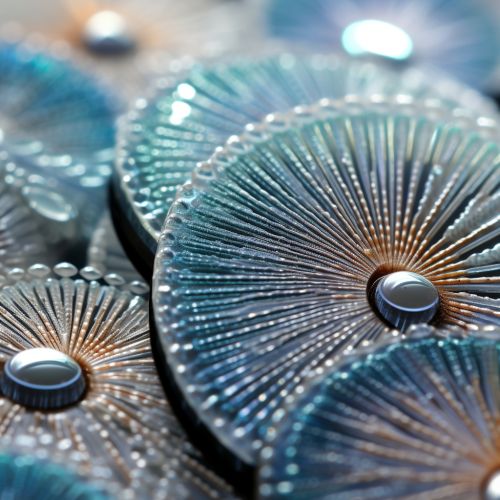Mechanisms of Silicon Utilization in Diatoms
Introduction
Diatoms are a major group of algae, and are among the most common types of phytoplankton. They are unique in that their cell walls are made of silica, a component commonly found in sand and glass. This article will delve into the mechanisms of silicon utilization in diatoms, a process that is crucial for their survival and proliferation.


Silicon Uptake
Diatoms have developed a unique mechanism for the uptake of silicon. This process is facilitated by silicon transport proteins, also known as SITs, which are located in the plasma membrane of the diatom cell. These proteins actively transport silicic acid, the form of silicon available in aquatic environments, from the external environment into the cell.
Silicon Deposition
Once inside the cell, the silicic acid is transported to the SDV, where it is polymerized into silica to form the cell wall structure known as the frustule. This process is catalyzed by the enzyme silicatein, which is found in high concentrations in the SDV. The exact mechanism of silica polymerization is still a subject of ongoing research, but it is believed to involve a complex interplay of proteins and other organic molecules.
Silicon Recycling
Diatoms also have the ability to recycle silicon from old or damaged frustules. This process, known as silicon recycling or silicon reutilization, allows diatoms to survive in environments where silicon is scarce. The exact mechanism of silicon recycling is not fully understood, but it is believed to involve the breakdown of the frustule into silicic acid, which is then transported back into the cell and reused.
Silicon Regulation
The uptake and utilization of silicon in diatoms is tightly regulated. This is achieved through a complex network of gene regulatory mechanisms, which respond to changes in the external silicon concentration. When silicon is abundant, the expression of SITs and other silicon-related genes is upregulated, allowing the diatom to take up more silicon and grow rapidly. Conversely, when silicon is scarce, these genes are downregulated to conserve resources.
Silicon and Diatom Ecology
The ability to utilize silicon gives diatoms a competitive advantage in many aquatic environments, where silicon is often a limiting nutrient. This has important implications for the ecology of diatoms and their role in global biogeochemical cycles. For example, diatoms are a major source of biogenic silica, which plays a crucial role in the global carbon cycle by sequestering carbon dioxide in the deep ocean.
Conclusion
Understanding the mechanisms of silicon utilization in diatoms is not only important for understanding the biology of these fascinating organisms, but also for understanding the global biogeochemical cycles in which they play a crucial role. Despite significant advances in our understanding, many aspects of silicon utilization in diatoms remain a mystery, and further research is needed to fully unravel these complex processes.
